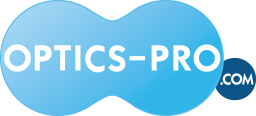Glossary | Telescope accessories | Special features
Accessory tray
Located between the tripod legs for storing eyepieces, filters, etc.
Adjustable eyepiece cup
Eyecups are adjustable for a comfortable viewing position.
Controllable via PC (1)
As an alternative to the hand-control box, celestial objects can be controlled via a PC with appropriate software.
Correction of horizontally reversed image
Displays the back-to-front image correctly using a prism or a reversing lens.
Correction of vertically reversed image
The telescope image is always upside down, but can be corrected using correction optics or mirrors.
Dovetail bar connector
Optical telescopic tubes are usually connected to the telescope using an adapted dovetail bar. This makes it possible to quickly set up and take down the telescope.
Eyepiece set
A collection of several eyepieces which cover various levels of magnification.
Filter thread
Used to connect a filter to the accessory.
GoTo function
Object positioning system, available in real GoTo and also PushTo versions.
GoTo system
An object can be selected using a hand-control box, the telescope will be automatically directed to it, and the object is positioned in the field of view.
Homofocal
Homofocal eyepieces in a series have the same focal position.
Latitude scale
Used to set the geographic latitude of the observing location.
PEC correction
An electronic improvement to a mount’s periodic drive gear error.
Polar finder
Used for the exact alignment of an equatorial mount. Accurate astrophotography is only possible having first located the celestial north pole.
Ring clamp
Protects the eyepiece sleeve from damage.
Setting circles
The scales of the RA and DEC axes of equatorial mounts. With more expensive mounts, the setting circles are also suitable for locating objects using the equatorial coordinate system.
Updateable via web
The latest software updates can be uploaded.
Zoom eyepiece
With these eyepieces, the magnification can be variably adjusted within a certain range.
